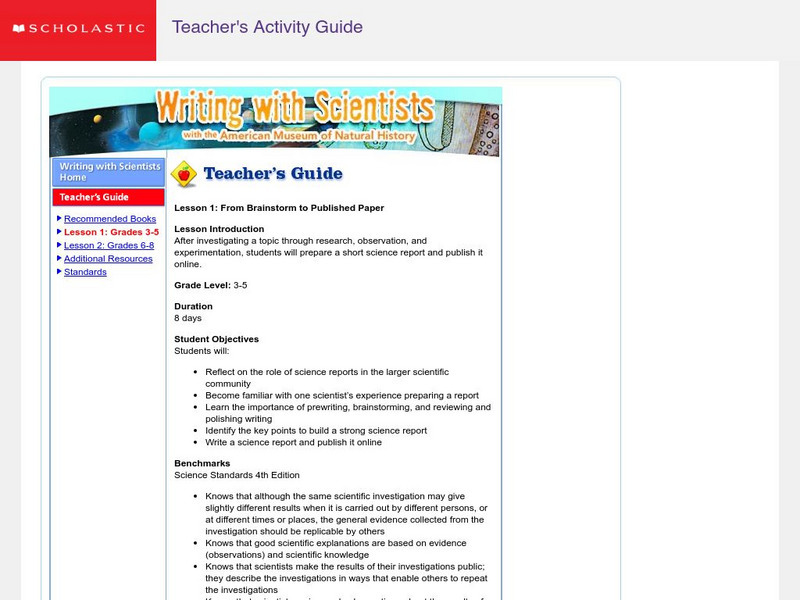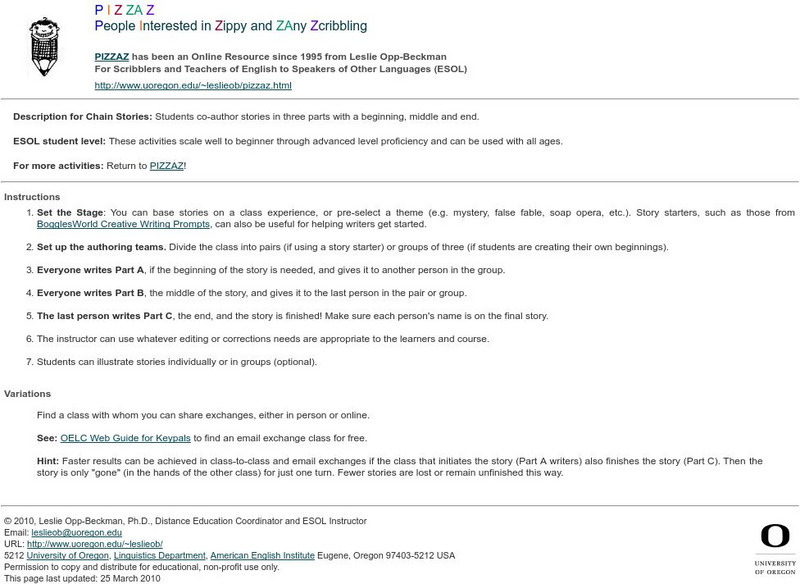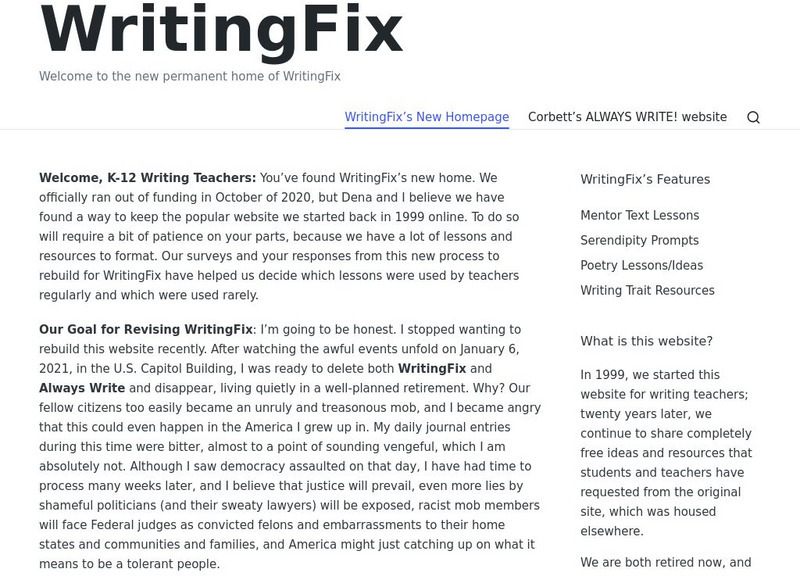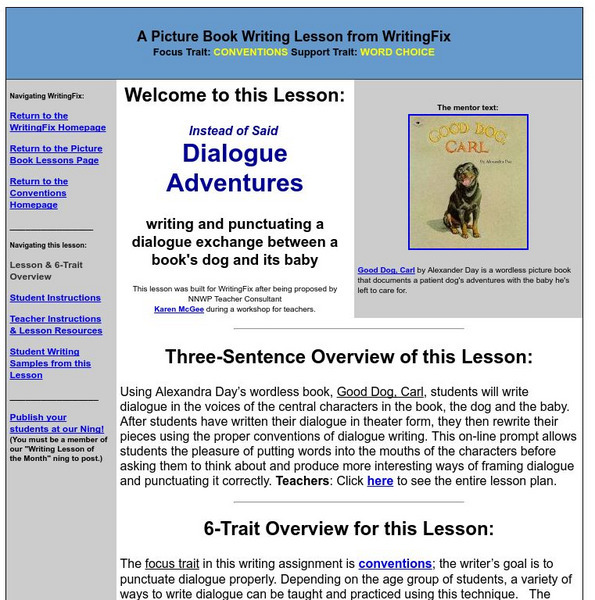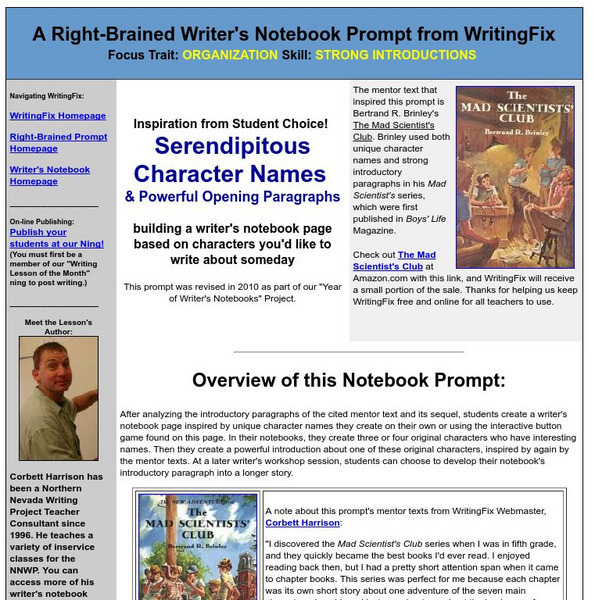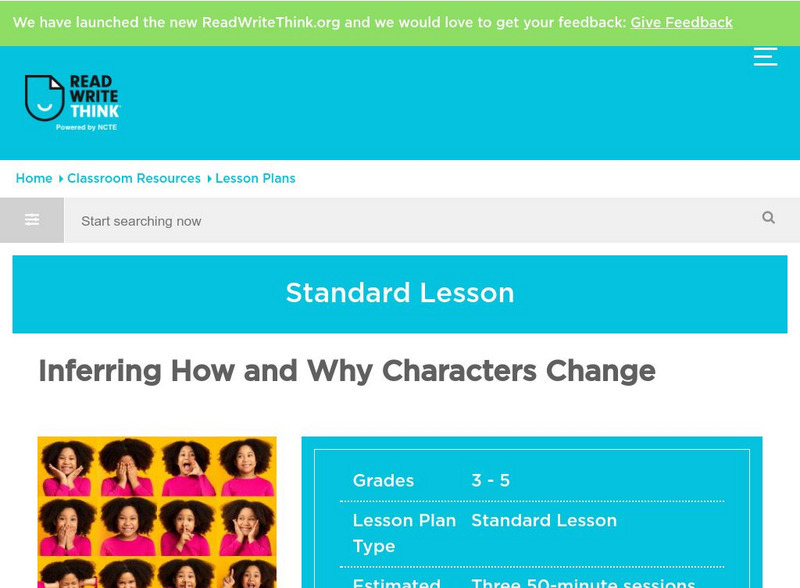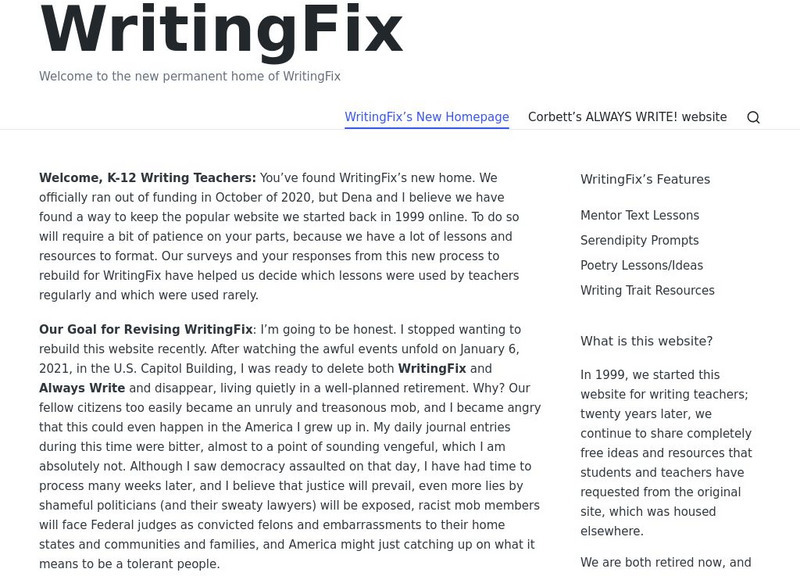Scholastic
Scholastic: Writing With Scientists
After students investigate a topic through research, hypothesizing, observing, and experimentating, teachers can use this lesson to help their students prepare short science reports and publish them online. The Writing with Scientists...
Other
Storyboard That
Create your own storyboard with this interactive tool. The storyboard framework is a graphic organizer that helps structure students work into a linear and concise story. Although it feels easy at first, breaking down ones thoughts into...
ReadWriteThink
Read Write Think: Choosing Clear and Varied Dialogue Tags: A Minilesson
Contains plans for one 50-minute lesson that teaches about using dialogue tags like "he said" or "she answered." In addition to student objectives and standards, these instructional plans contain links to PDF handouts and links to sites...
PBS
Pbs Learning Media: Storytelling With Words and Pictures
In this interactive lesson plan, students learn the basics of how stories are structured, gain vocabulary about storytelling elements, and explore how the arts, specifically drawing, can be a valuable way for students to tell stories.By...
Utah Education Network
Uen: Create a Book (Grade 3 6)
Young scholars will illustrate and write their own story.
University of Oregon
Pizzaz, Creative Writing & Storytelling: Chain Stories
This PIZZAZ (People Interested in Zippy and ZAny Zcribbling) lesson plan will engage students in writing chain stories. A variation of the lesson is provided as an extension during the publishing phase of writing.
Writing Fix
Writing Fix: Short Adventure Stories
Inspired by the interactive plot ideas here, writers will create an original three-paragraph adventure story. First, each writer will create an original adventurer. Next, each writer will place the adventurer in a brief, organized...
Writing Fix
Writing Fix: Puns and Punctuation
A Writer's Workshop idea in which learners learn to use and punctuate adverbs and specific dialogue to create puns called Tom Swifties. Teacher instructions, student instructions, and student writing samples are provided, as well as an...
Writing Fix
Writing Fix: "Lawd! Lawd! Lawd!"
Inspired by the character Charlie in Daniel Keye's Flowers for Algernon, the writer will craft sentences, using different dialects/sayings with correct dialogue punctuation. The writer will devote a page in his/her writer's notebook to...
Writing Fix
Writing Fix: Unique Imaginary Friends
The writer will first create an original imaginary friend, inspired by Ted from Tony DiTerlizzi's wonderful picture book. The writer will then think of an ordinary activity done on a daily basis, like feeding the family dog. The writer...
Writing Fix
Writing Fix: Voicing an Original Fairy Tale Character
In this lesson learners will create an original fairy tale based on one character's perspective.
Writing Fix
Writing Fix: Put 'Em on a Talk Show
In this lesson plan, students will write a script for a talk show, based on character traits from fairy tale stories. Scripts will be rehearsed, costumed, and performed in front of the class.
Writing Fix
Writing Fix: Dialogue Adventures
In this lesson students will learn how to write dialogue in a particular voice.
Writing Fix
Writing Fix: Serendipitous Character Names & Powerful Opening Paragraphs
In this lesson, Bertrand R. Brinley's The Mad Scientist's Club is used as a mentor text. Students will analyze the introductory paragraph of the mentor text and its sequel. Then students will use an interactive button to select a...
Writing Fix
Writing Fix: A Chapter Book Writing Lesson: Beyond Once Upon a Time
Learners are so used to hearing stories that start with the words Once upon a time and when writing their own stories, they often begin with these same words or with variations like One day I. Inspired by the novel Crispin by Avi This...
Curated OER
Mc Graw Hill: Part 1 Reading: Literature: Describe Characters
A reference guide on how to analyze characters in a story.
ReadWriteThink
Read Write Think: Planning Story Characters Using Interactive Trading Cards
Students use trading cards to examine fictional characters in a story.
ReadWriteThink
Read Write Think: Comprehending Nonfiction Text on the Web
Contains plans for three lessons designed to improve comprehension of nonfiction, especially nonfiction texts on the web. It focuses on identifying text features, locating specific information, and generalizing that information. In...
ReadWriteThink
Read Write Think: How and Why Characters Change
This lesson plan examines and makes inferences into the change and development in characters. Included in the lesson plan is an overview, practice, objectives, resources, preparation, and more.
ReadWriteThink
Read Write Think: Using Picture Books to Teach Characterization
Contains plans for two or three lessons that ask students to examine characterization in picture books to use as models for their own writing. In addition to objectives and standards, this instructional plan contains links to sites used...
John F. Kennedy Center
The Kennedy Center: Arts Edge: What a Character!
In this lesson, students analyze how a character's personality traits, actions, and motives influence the plot of a story. Students also learn how storytellers use their face, body, and voice, as well as the five senses, to enhance the...
Writing Fix
Writing Fix: Actions Speak Louder Than Words
After hearing and discussing an excerpt from Sharon Creech's Walk Two Moons, students will plan to create a unique description of a character that uses memorable actions that "show" a person's character. They will brainstorm verbs that...
Writing Fix
Writing Fix: A Character's Decalogue
In this lesson, the writer first writes a personal decalogue (a list of ten personal beliefs) about something important to him/her. The writer then creates a decalogue for a fictional character they will invent and envision. The final...
E Reading Worksheets
E Reading Worksheets: Character Types Worksheets and Lessons
This online learning module offers lessons about "characters" and practice exercises about "characters" in stories. These lessons are organized according to the grade levels to which they apply.


